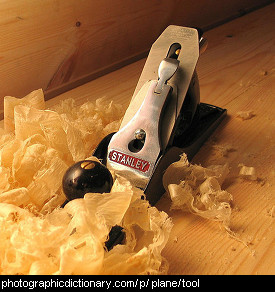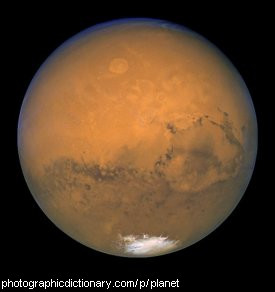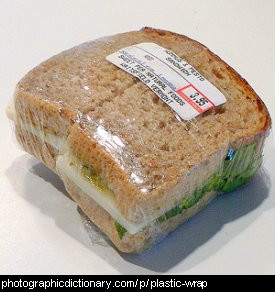Pis forPlane (tool)
A plane is a tool for shaving off thin layers of wood, to make something flatter or thinner. Planes are often used to make a sticky door fit better. Planes have handles on them placed so you can get the best force, and the wood itself is shaved off with an adjustable blade under the plane. Planes work best going with the grain of the wood, not across it.
As with many hand tools, you can also buy electric planes that don't require as much force to get them to work.
A planet is a large body that orbits a sun. Planets, unlike suns, do not give off light. Our solar system has eight planets, nine including pluto. They are:
Plant is a word that covers an enormous number of living things in the world. Plants can be divided up into several groups, namely algae (that green slime you find in ponds), bryophytes (non vascular plants, or mosses and lichens - the small, often fuzzy plants that you see growing on rocks or on the ground in damp corners) and tracheophytes.
Tracheophytes, or vascular plants, are the most familiar. They include all the trees, ferns, grass and flowers you see around your neighbourhood. The plant in the picture is a vascular plant, growing in a pot.
Pis forPlanthopper
Scientific name: infraorder: fulgoromorpha
Planthoppers are a group of insects that come in a variety of shapes and sizes, but most often green and leaf-shaped. They can hop short distances like a grasshopper, hence their name.
Plaster is a white powdered substance that is made from gypsum, a kind of stone. When water is added to plaster it stays as a wet paste for a little while but then it goes hard. As it goes hard it gets hot - plaster setting is an exothermic reaction. If you are going to put plaster on your skin you should do it slowly, in thin layers or you could get burnt.
Today, plaster is most commonly used mixed with lime to line the inside walls of houses, or put into bandages to hold a broken bone in place as it heals.
Plastics are a synthetic material that can be cast into virtually any shape. Plastics can range from hard to soft, can be flexible or firm, transparent or opaque. Plastics of various kinds are used in the making or packaging of virtually everything nowadays.
Pis forPlastic wrap
Plastic wrap, also known as Glad wrap, cling wrap, cling film, Saran wrap or Stretch-Tite, is a very thin film of plastic that comes on a roll. You use it to wrap up food to keep it fresh.
Some kinds of plastic wrap come on very large rolls and are used to wrap up large things like pallets of bricks or newspaper to stop them from being damaged in transit. These kinds of plastic wrap aren't meant to be used on food.






















